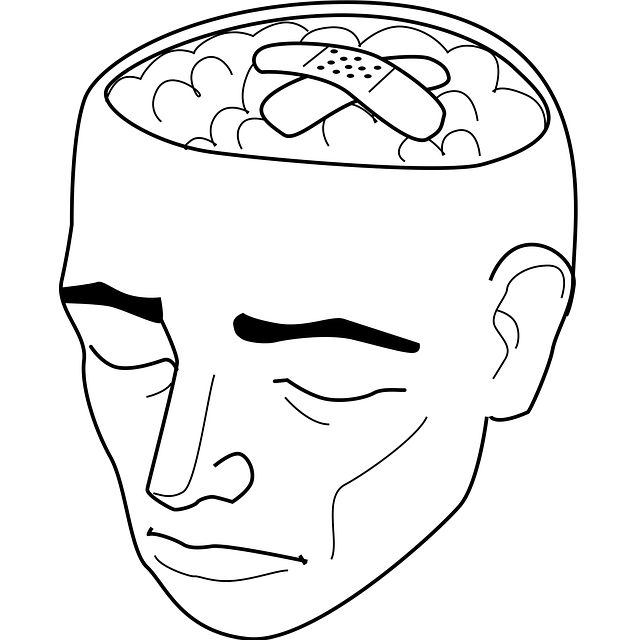Lone Tree Hypnosis Therapy prioritizes client safety through comprehensive risk assessment, considering history, psychological conditions, and triggers. This process aligns with industry standards and legal requirements, fostering a secure environment for positive therapeutic outcomes. By integrating Emotional Well-being Promotion Techniques and Stress Management approaches, the therapy empowers clients to explore their emotional landscapes securely. Harm minimization plans are developed strategically, including regular reviews and updates, ensuring both protection and enhanced wellness during every session. Lone Tree Hypnosis Therapy commits to continuous improvement and evidence-based practices for compassionate, effective mental health care.
“Lone Tree Hypnosis Therapy emphasizes the paramount importance of risk assessment and harm minimization planning in ensuring client safety. This comprehensive guide explores essential aspects of safe practice, beginning with understanding risk assessment as a cornerstone of effective therapy. We delve into identifying potential hazards unique to therapeutic settings, followed by strategies for developing robust harm minimization plans. Learn implementation tactics for seamless risk management and the critical role of regular review in adapting to evolving safety needs.”
- Understanding Risk Assessment: A Cornerstone of Safe Practice
- Identifying Potential Hazards in Therapy Settings
- Developing a Comprehensive Harm Minimization Plan
- Implementation Strategies for Effective Risk Management
- Regular Review and Adaptation: Ensuring Continuous Safety
Understanding Risk Assessment: A Cornerstone of Safe Practice

Risk assessment is a fundamental process in any field, but it holds particular significance in Lone Tree Hypnosis Therapy, where client safety and well-being are paramount. It involves meticulously examining potential hazards and evaluating their likelihood and severity to prevent harm. By understanding risk assessment, therapists can create tailored strategies that ensure the highest level of client security. This cornerstone of safe practice is not just about identifying dangers but also about proactive measures to mitigate them.
In the context of Lone Tree Hypnosis Therapy, risk assessment encompasses considering various factors specific to hypnosis sessions, such as client history, psychological conditions, and potential triggers. It involves a comprehensive Mental Health Policy Analysis and Advocacy to ensure that all practices align with industry standards and legal requirements. Additionally, this process paves the way for developing effective Self-Care Routine Development for Better Mental Health strategies, enhancing clients’ overall mental wellness. Therapists can then employ these insights to design personalized harm minimization plans, fostering a safe environment conducive to positive therapeutic outcomes.
Identifying Potential Hazards in Therapy Settings

In the serene atmosphere of Lone Tree Hypnosis Therapy, fostering a safe and therapeutic environment is paramount. Identifying potential hazards goes beyond ensuring physical safety; it encompasses emotional and psychological risks as well. Skilled therapists at Lone Tree Hypnosis Therapy are trained to recognize subtleties that might indicate underlying mental health issues or past traumas that could surface during sessions. These could manifest as intense emotions, flashbacks, or triggered behaviors, requiring immediate and delicate handling.
Implementing robust risk assessment practices involves evaluating each client’s unique history, especially those with a history of trauma or substance abuse. Strategies for harm minimization planning are then tailored to address specific vulnerabilities, incorporating Emotional Well-being Promotion Techniques and Stress Management approaches known to enhance Mental Wellness. The goal is not only to mitigate potential risks but also to create an empowering space where clients can explore their emotional landscapes safely and securely.
Developing a Comprehensive Harm Minimization Plan

Developing a comprehensive harm minimization plan is an integral part of any risk assessment process, especially within the realm of Lone Tree Hypnosis Therapy. This strategic approach aims to mitigate potential risks and promote client safety and well-being. The plan should encompass various aspects tailored to the unique needs of hypnosis therapy. For instance, it involves identifying specific triggers or issues that may cause distress to clients and devising techniques to address them proactively. By implementing evidence-based strategies, therapists can facilitate emotional regulation and foster resilience building, enabling clients to develop positive thinking skills.
A well-structured plan will incorporate proactive measures to prevent harm while also outlining steps for effective intervention should any adverse events arise. It should include a detailed risk assessment matrix, identifying potential hazards and allocating appropriate mitigation strategies. Regular reviews and updates are essential to ensure the plan remains relevant and effective in addressing evolving client needs. This proactive approach not only protects clients but also enhances the overall therapeutic experience at Lone Tree Hypnosis Therapy.
Implementation Strategies for Effective Risk Management

Implementing effective risk management strategies is pivotal for any mental health practice, including Lone Tree Hypnosis Therapy. The first step involves a comprehensive risk assessment that identifies potential hazards and vulnerabilities within the therapeutic environment. This process requires professionals to analyze various factors such as client demographics, treatment modalities, and existing safety protocols. By meticulously evaluating these aspects, therapists can anticipate and mitigate risks proactively.
For instance, tailored risk management planning for mental health professionals should address individual client needs, especially those with a history of trauma or high-risk behaviors. Incorporating emotional healing processes into the therapy model ensures that both the therapist and client are prepared to navigate potential triggers or crises. Through regular reviews and updates, these plans can be adapted to reflect changing circumstances, ensuring ongoing protection for clients and practitioners alike.
Regular Review and Adaptation: Ensuring Continuous Safety

At Lone Tree Hypnosis Therapy, we understand that mental health is a dynamic and evolving field, which is why regular review and adaptation are integral to our safety protocols. Continuous improvement ensures that we stay ahead of emerging risks and best address them with evidence-based practices. Our team engages in ongoing professional development, staying abreast of the latest research and guidelines in both hypnosis therapy and mental wellness journaling exercises guidance. This proactive approach not only aligns with the principles of risk assessment for mental health professionals but also fosters a culture of compassion cultivation practices within our practice.
Through regular internal assessments and external peer reviews, we identify areas where harm minimization planning can be enhanced. We incorporate these insights into our existing strategies, ensuring that every step taken promotes the highest level of safety for both clients and practitioners. By adopting this flexible mindset, Lone Tree Hypnosis Therapy remains committed to providing a secure and supportive environment, fostering mental wellness through compassionate and effective care.
Lone Tree Hypnosis Therapy emphasizes the importance of thorough risk assessment and harm minimization planning as foundational elements for safe therapeutic practices. By understanding potential hazards, developing comprehensive strategies, and implementing effective management techniques, therapy settings can ensure a secure environment for clients. Regular review and adaptation are key to maintaining safety, reflecting the dynamic nature of both the therapy field and individual client needs. Through these proactive measures, Lone Tree Hypnosis Therapy promotes not only minimalization of risks but also enhanced well-being for all involved.








